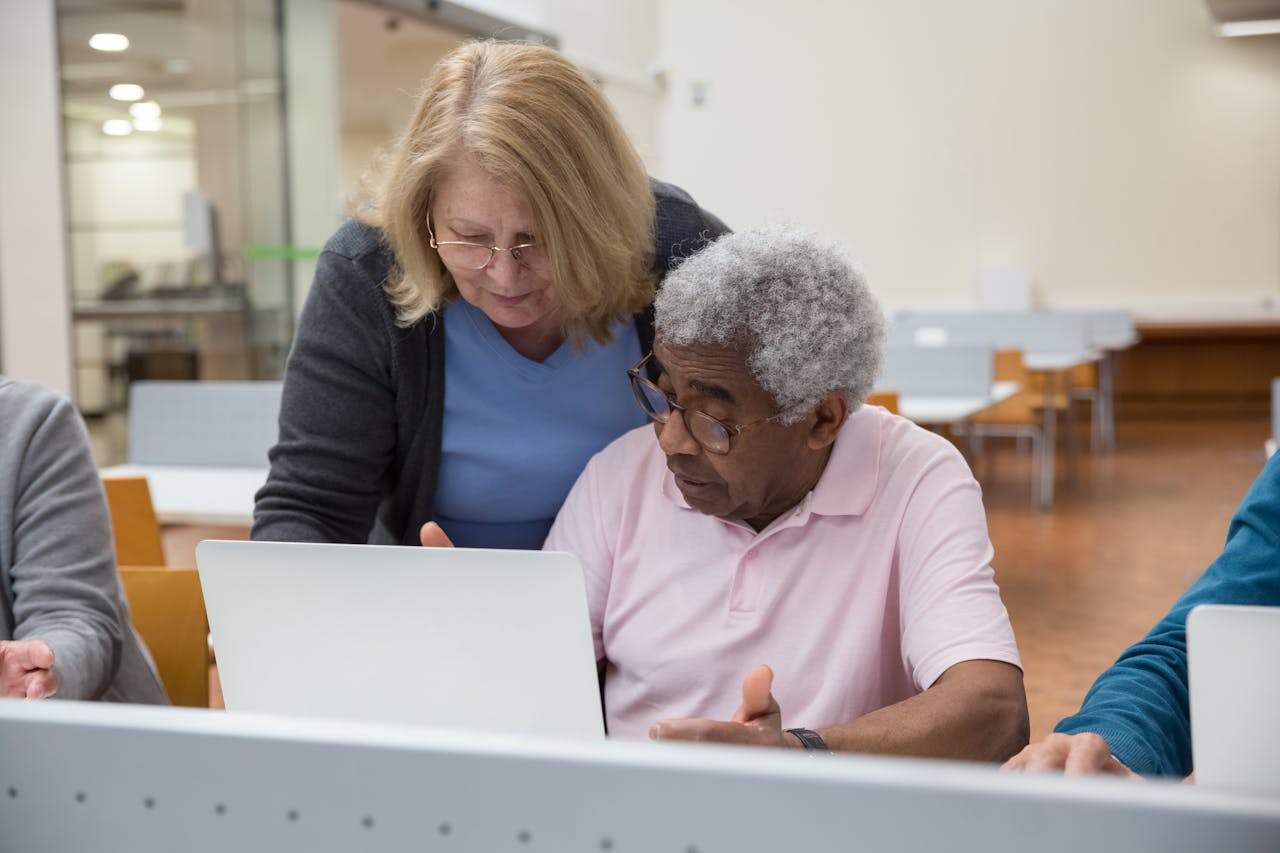Assistive technology refers to a wide range of devices, systems, and services designed to improve the functional capabilities of individuals with disabilities. This technology encompasses various tools ranging from simple aids, such as magnifying glasses, to sophisticated software used to communicate or control environments. The critical goal of assistive technology is to enhance the quality of life for users, allowing them to perform tasks independently and engage more fully in their communities.
The importance of assistive technology lies in its ability to promote accessibility and independence. For instance, individuals with visual impairments may benefit from screen readers, while those with mobility challenges might use wheelchair-accessible devices. These tools not only aid in performing daily tasks but also foster inclusion and participation in educational and professional settings. By bridging gaps and eliminating barriers, assistive technology paves the way for a more equitable society.
Assistive technology can be categorized into various types depending on its purpose. High-tech assistive technology examples include voice recognition software and adaptive computer interfaces, which provide tailored solutions to enhance communication and interaction with devices. Conversely, low-tech options might involve simple tools such as ergonomic utensils that cater to individuals with dexterity issues. Both high-tech and low-tech solutions play a vital role in ensuring that individuals with disabilities have the resources they need to lead fulfilling lives.
Ultimately, the overarching goals of assistive technology include enhancing functional independence, facilitating communication, and improving the overall well-being of individuals with disabilities. By addressing both the physical and cognitive barriers these individuals encounter, assistive technology serves as a crucial resource for empowerment and support. As we delve deeper into specific examples and applications, it becomes evident that the evolution and implementation of assistive technology continue to transform lives, fostering a more inclusive environment for all.
Types of Assistive Technology
Assistive technology encompasses a broad spectrum of tools and devices designed to support individuals with various disabilities, enhancing their ability to perform functions that may be challenging due to their condition. These technologies can generally be categorized into three primary types: communication aids, mobility devices, and sensory enhancements.
Communication aids are vital for individuals who experience difficulties with speech and language. This category includes devices such as speech-generating devices, text-to-speech software, and various communication boards or apps. For example, individuals with speech impairments may use electronic devices that generate spoken language through typed input, enabling them to express their thoughts and needs more effectively. These communication aids address the needs of those with conditions such as autism spectrum disorder, cerebral palsy, or other neurological disorders.
Mobility devices are another critical form of assistive technology that facilitate movement and independence. These include wheelchairs, scooters, walkers, and prosthetics. For instance, powered wheelchairs enable individuals with severe mobility limitations to navigate their environment with ease. Mobility devices are essential for those with physical disabilities, allowing them to participate more fully in daily activities.
Lastly, sensory enhancements play a significant role in assisting individuals who have visual or hearing impairments. These devices range from screen readers and braille displays for the visually impaired to hearing aids and visual alert systems for the deaf or hard of hearing. Such assistive technology examples enhance the ability to perceive and interact with the environment, effectively bridging communication gaps and improving the quality of life for users. Overall, understanding these types of assistive technology provides a foundational overview of the various tools available to individuals facing diverse challenges.
Communication Aids: Enhancing Interaction
Communication aids serve a vital role in empowering individuals with speech or language impairments to engage effectively with others. These assistive technology examples are designed to facilitate interaction and expression, enabling users to communicate their thoughts and needs in a manner that suits their abilities. Various types of communication aids exist, including speech-generating devices, augmentative and alternative communication (AAC) systems, and mobile applications tailored for communication purposes.
Speech-generating devices are a prominent form of assistive technology used by individuals with speech difficulties. These devices convert text or symbols into spoken language, helping the users convey messages more naturally in real-time conversations. They can be utilized in a range of environments—from educational settings to social gatherings—enhancing interaction and promoting inclusivity.
Another significant category is augmentative and alternative communication systems. These systems can be categorized as low-tech or high-tech. Low-tech options may include picture boards or communication books, while high-tech AAC systems involve sophisticated software and hardware solutions that allow users to select words or phrases to generate speech. Both types play a crucial role in bridging communication gaps and providing individuals with more autonomy in their interactions.
Moreover, mobile applications designed for communication have gained traction due to their accessibility and user-friendly interfaces. These apps can be customized to suit individual communication needs, offering features such as text-to-speech, symbol-based messaging, and even video calling options. The widespread availability of smartphones and tablets enhances the ability of those with communication challenges to stay connected with their friends and family.
Through the implementation of these assistive technology examples, individuals with speech or language impairments can experience meaningful engagement with their communities. These tools not only promote independence but also foster greater societal inclusion by removing barriers to effective communication.
Mobility Devices: Facilitating Movement
Mobility devices are essential forms of assistive technology that significantly enhance the movement capabilities of individuals facing various mobility challenges. These devices encompass a range of equipment, including wheelchairs, walkers, and prosthetics, each designed to provide specific support tailored to individual needs. By incorporating these tools into their daily lives, users can experience greater autonomy and improved quality of life.
Wheelchairs, whether manual or powered, are among the most recognized assistive technology examples. They are designed for individuals who may struggle with walking due to injury, illness, or disability. A well-fitted wheelchair can provide necessary support, allowing users to navigate their environment independently. Additionally, powered wheelchairs with advanced features offer increased mobility, making it easier for users to engage in daily activities and socialize within their communities.
Walkers serve as another valuable mobility aid, providing stability and support to individuals who require assistance while walking. They come in various forms, including standard walkers, wheeled walkers, and rollators, each designed to accommodate different levels of mobility impairment. The use of walkers not only helps in improving balance and preventing falls but also encourages users to maintain an active lifestyle by promoting movement.
Prosthetics, which replace lost limbs, are crucial examples of assistive technology that facilitate movement for individuals who have undergone amputations. Advances in prosthetic design and technology have led to the creation of highly functional devices that adapt to the user’s lifestyle, enabling them to perform daily tasks, engage in physical activities, and enhance their overall independence. Proper fitting and customization of mobility devices are paramount to ensure comfort and usability. Customization involves adjusting the height, weight, and features of the devices to match the user’s specific needs, thus optimizing functionality and enhancing the user experience.
Sensory Enhancements: Supporting Perception
Assistive technology plays a vital role in enhancing sensory perception for individuals with disabilities, particularly those who are deaf or hard of hearing, as well as those who are blind or visually impaired. Through various assistive technology examples, these devices can significantly improve the quality of life and communication for affected individuals.
For individuals with hearing impairments, hearing aids are one of the most prevalent examples of assistive technology. These devices amplify sound, allowing users to engage in conversations and participate more fully in social activities. Cochlear implants represent another advanced option, providing a direct electrical stimulation of the auditory nerve, which can lead to improved hearing capabilities for those who experience severe hearing loss. These technologies enable users to perceive sounds in ways they might not have been able to before, thereby enhancing their interaction with the environment.
On the other hand, individuals who are blind or visually impaired benefit from a range of assistive technologies designed to facilitate their orientation and navigation. Examples include screen readers that convert text into speech, enabling users to access information on computers and mobile devices seamlessly. Braille displays are also significant; they transform digital text into tactile Braille, allowing individuals to read through touch. Furthermore, various tactile communication methods, such as the use of tactile graphics or haptic feedback systems, offer alternative ways to perceive information for those unable to rely on sight.
By utilizing these assistive technologies, individuals can process sensory information more effectively, leading to greater independence and improved engagement with their surroundings. The continuous advancement in sensory enhancement technologies offers promising solutions for those affected by hearing or vision impairments, affirming the importance of adaptability in support systems. As such, understanding and implementing these assistive technology examples is crucial for fostering inclusivity and enhancing life experiences.
Everyday Assistive Technologies: Smart Home Solutions
In recent years, smart home technologies have emerged as significant assistive technology examples that enhance the daily lives of individuals with disabilities. These technologies aim to increase independence and enable users to control their living environments more effectively. One notable innovation in this realm is the voice-activated assistant, which allows users to interact with their home devices using simple voice commands. These systems, such as Amazon Alexa and Google Assistant, can help manage various tasks, including playing music, setting reminders, or answering questions, thereby reducing the physical effort required for daily activities.
Another critical component of smart home technology includes automated lighting systems. By utilizing sensors and smart bulbs, individuals can program lighting to turn on or off at specified times or even adjust brightness with ease. For persons with mobility impairments, the ability to control lighting via an app or voice command is particularly beneficial, as it minimizes the need for physical movement to operate traditional switches. Additionally, these systems can create safer environments, reducing the risk of accidents associated with poor visibility in the home.
Automated thermostats also represent an essential assistive technology example, allowing users to maintain comfortable living conditions without having to manipulate traditional controls. Thermostats that can be programmed or controlled remotely ensure that users can adjust heating and cooling systems according to their preferences or needs. This feature proves especially advantageous for individuals with sensory sensitivities or those unable to reach standard thermostat placements.
With these smart home solutions, assistive technology continues to evolve, providing customizable and user-friendly tools that empower individuals with disabilities. By integrating these technologies into their daily routines, users can achieve greater autonomy and enhance their overall quality of life.
Education and Learning Tools: Fostering Independence
Assistive technology examples are rapidly transforming the educational landscape, providing essential support for students with disabilities. These tools are designed to enhance learning experiences and promote academic success, allowing students to achieve a greater level of independence. Among the many assistive technologies available, text-to-speech software stands out as a vital resource. This technology converts written text into spoken words, enabling students with reading difficulties or visual impairments to access written materials more easily. By listening to the content rather than reading it, these learners can better comprehend and engage with the subject matter.
Another significant development in assistive technology is the rise of audiobooks. Audiobooks offer an accessible alternative to traditional reading materials, particularly for those with learning disabilities such as dyslexia. With a vast library of available titles, audiobooks not only support literacy development but also encourage a love for literature and learning. This approach allows students to explore complex narratives at their own pace, facilitating a deeper understanding of the material and fostering independent learning.
In addition to text-to-speech software and audiobooks, specialized computer programs are gaining prominence within educational settings. These programs may include graphic organizers, speech recognition software, or educational games specifically designed for various learning styles and challenges. By accommodating individual needs, these accessible tools help create inclusive learning environments where all students can flourish. Furthermore, they provide opportunities for collaboration, allowing students to work together and support one another in their educational pursuits.
Ultimately, the integration of these innovative assistive technology examples within classrooms is crucial in providing equitable education for students with disabilities. By ensuring that all learners have access to the necessary resources, educators can foster a sense of belonging and empower students to take charge of their own educational journeys.
Emerging Trends in Assistive Technology
The landscape of assistive technology is evolving rapidly, driven by advancements in various fields such as virtual reality (VR), artificial intelligence (AI), and wearable technology. These emerging trends are reshaping the capabilities of assistive devices and expanding their potential in aiding individuals with disabilities. As a result, new assistive technology examples are consistently being developed to enhance the user experience and promote independence.
Virtual reality has gained traction as a viable assistive technology, offering immersive experiences that can be therapeutic and educational. For instance, VR applications can help individuals with autism rehearse social situations in a controlled environment or assist those with physical disabilities in practicing motion control through simulated physical activities. This innovative use of technology not only facilitates skill-building but also enhances the user’s confidence in real-world scenarios.
Artificial intelligence is another key trend that is making significant strides in the realm of assistive technology. AI can analyze user behavior and preferences, allowing for personalized assistance and adaptive solutions. Voice-activated systems, smart home devices, and communication aids are prime examples where AI plays a crucial role in providing tailored support to users, significantly improving their daily lives. Furthermore, advancements in machine learning empower devices to continually improve their performance based on user interactions, thereby enhancing accessibility.
Wearable technology has also emerged as a powerful tool for individuals with disabilities. These devices, ranging from smartwatches to specialized sensors, can monitor health conditions, provide alerts, and facilitate communication. For example, wearable devices equipped with GPS can assist individuals with vision impairments in navigation. The integration of sensors and connectivity within wearables promotes a higher level of autonomy and safety, which is essential for many users.
Overall, these emerging trends in assistive technology highlight the intersection of innovation and accessibility, providing a glimpse into a future where individuals with disabilities can maximize their potential and engage more fully with the world around them.
Conclusion: The Future of Assistive Technology
Throughout this blog post, we have explored various assistive technology examples that demonstrate the significant impact of technology in enhancing accessibility and inclusivity for individuals with diverse needs. From screen readers to adaptive communication devices, these innovations have proven essential in leveling the playing field, showcasing how technology can empower individuals to lead more independent lives.
Assistive technology serves as a vital tool for individuals with disabilities or challenges, enhancing their opportunities for education, employment, and social engagement. By examining various assistive technology examples, we have highlighted the myriad applications ranging from simple tools to complex systems that cater to the unique needs of users. These advancements not only address limitations but also promote self-sufficiency, allowing individuals to navigate their environments with confidence.
Looking ahead, it is crucial to acknowledge the ongoing need for continuous innovation within the field of assistive technology. As technology continues to evolve, so must our commitment to advocacy and development that ensures equitable access for all. Advocacy plays a pivotal role in driving awareness and furthering research to create more robust assistive solutions. In this dynamic landscape, collaboration between technologists, healthcare professionals, and policymakers is essential to address existing barriers and further enhance accessibility.
Ultimately, the future of assistive technology lies in our collective effort to foster inclusivity, ensuring that innovations reach those who need them most. By embracing advancements and striving towards a more accessible society, we can create environments where everyone can thrive, regardless of their individual challenges. The pathway to a supportive, inclusive future begins with our dedication to harnessing technology’s power for the benefit of all individuals.



